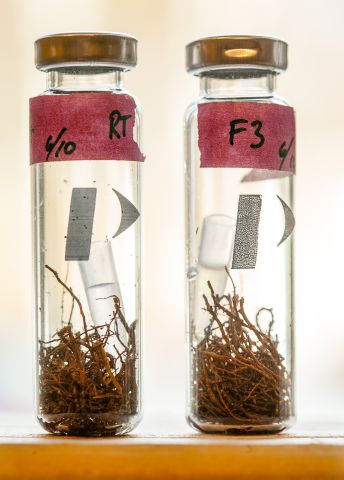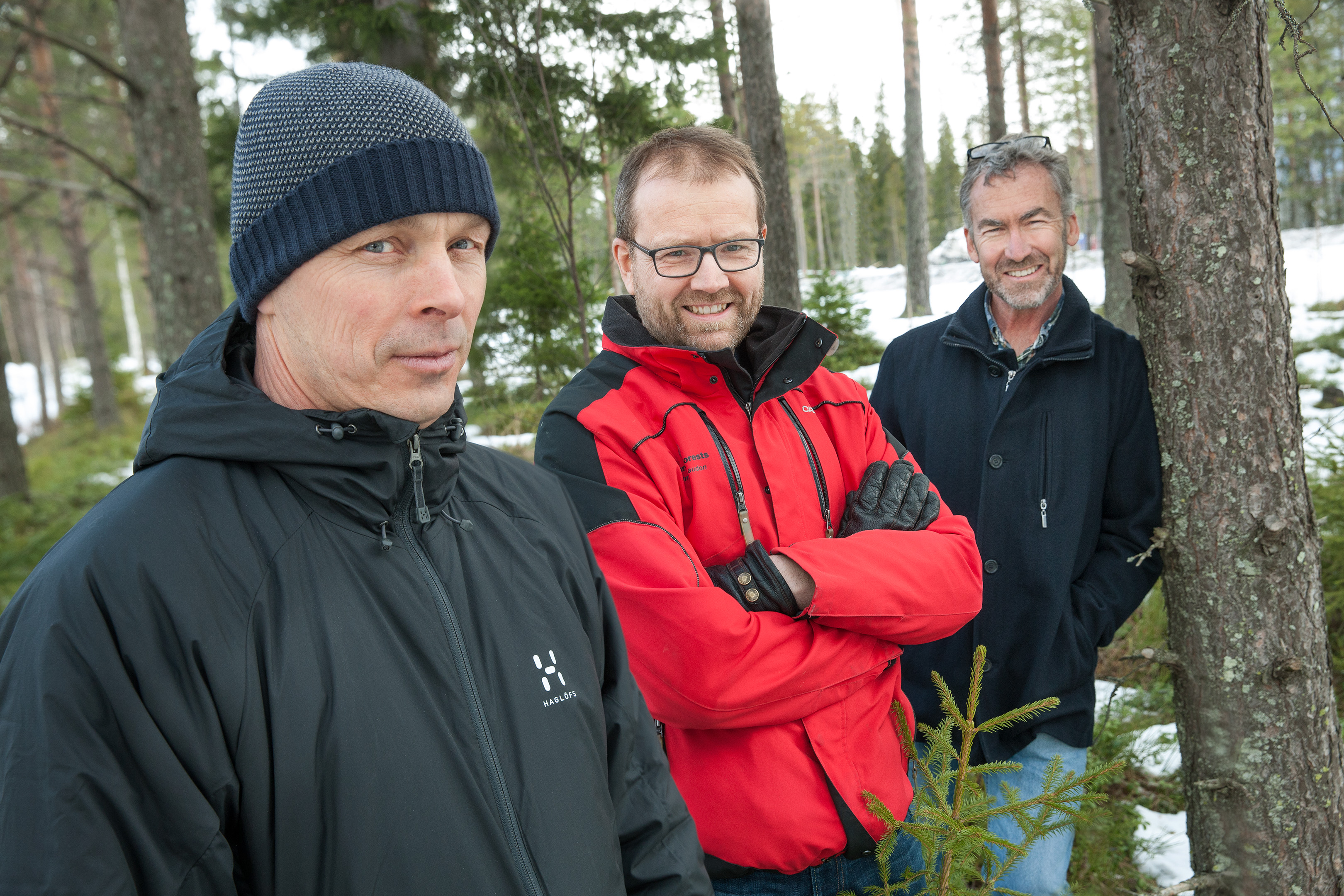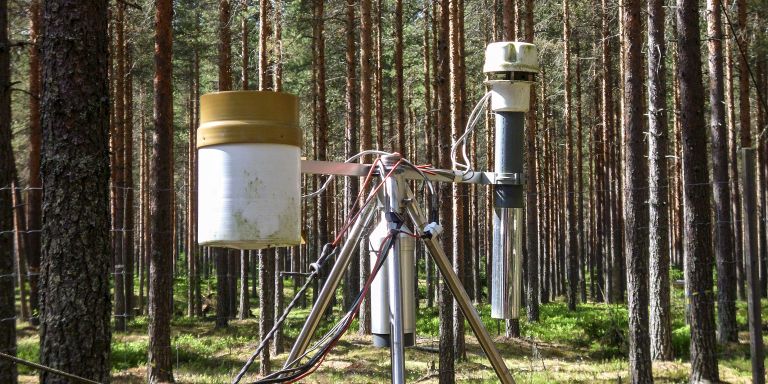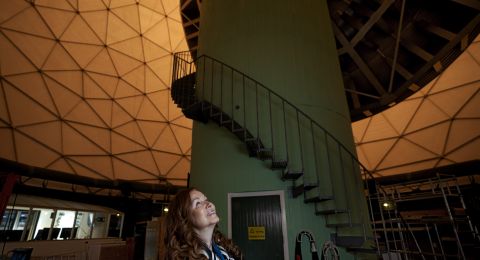
Project Grant 2015
Physiological Branch Points with Ecosystem Consequences: Carbon and Water in Boreal Forests
Principal investigator:
Torgny Näsholm
Co-investigators:
University of Helsinki
Annikki Mäkelä
Swedish University of Agricultural Sciences
Hjalmar Laudon
John Marshall
Matthias Peichl
Umeå University
Jürgen Schleucher
Institution:
Swedish University of Agricultural Sciences
Grant:
SEK 39.5 million over five years
The project, which is headed by Torgny Näsholm at the Department of Forest Ecology and Management at SLU in Umeå, has identified five closely-linked processes governing forest productivity and water supply. Each of them plays a key role in regulating the flow of carbon and water.
The researchers have been awarded a grant by the Knut and Alice Wallenberg Foundation to continue their research and deepen their analysis. They will be studying how much water flows, how much carbon is fixed, and how much energy is stored in boreal forests.
Hypothesis-driven research
All members of the project team will be contributing specialist expertise. Näsholm himself is a Professor of Ecophysiology, whose field includes studying a forest’s ability to adapt to environmental changes. Hjalmar Laudon is a Professor of Forest Biogeochemistry, and is involved in many other projects concerning the water cycle in the forest landscape.
John Marshall’s field is forest ecophysiology. He is Professor Emeritus at the University of Idaho, U.S., and guest professor at SLU in Umeå.
The researchers tried to summarize their project in a single image, but did not find a structure representing their visions until they contacted a graphic designer. They explained their ideas and he began to draw.
“We can’t draw, and needed help to concretize our idea,” Professor Näsholm explains.
At first there were thumbs down all round, but in the end everyone was enthusiastic. The image before them was that of a pine tree with faucets at the ends of its branches at different heights. Each faucet represents an important branch point between various processes that govern forest growth and carbon sequestration, as well as the flow of water, carbon and energy.
“Our project is an example of hypothesis-driven research. We don’t know yet whether our model gives an accurate picture of reality, but it is testable, and if it is found not to reflect forest functions, we will be able to formulate new and more accurate hypotheses,” says Professor Marshall.

Competing processes
The researchers are interested in the breakdown between evaporation of water in the forest ecosystem, and transpiration by the trees themselves. Several years of monitoring have shown that approximately half of the rainwater falling on the forest becomes stream water; the other half returns to the atmosphere in the form of evaporation and transpiration. The ability of trees to use water determines the exchange between carbon dioxide and water in photosynthesis, which converts light energy into chemical energy, thereby promoting growth.
Under certain conditions, photosynthesis is limited by a competing process – photorespiration. This causes oxygen to be absorbed, but also involves an energy loss. The flow of energy via the two processes may be seen as a branch point, in which photosynthesis causes energy to be saved in the system, thereby promoting growth, whereas photorespiration is a form of loss.
The researchers are also examining cell respiration, which is the cell’s way of acquiring energy. What proportion of cell respiration takes place in plant parts above ground, such as stems, shoots and leaves, and in underground parts such as roots and mycorrhiza? And how effective is it in promoting biomass production?
“Each of these processes play a key role in forest productivity and its ability to process carbon, water and energy,” explains Professor Laudon.

Isotopic monitoring
New analytical techniques based on isotopic monitoring are being used to study the processes the researchers have identified as having a particular bearing on forest growth under different environmental conditions. Monitoring is performed in a trial area close to the town of Vindeln, 50 kilometers west of Umeå, where the coastal climate meets inland conditions. The forest here is predominantly pine and spruce, and has been studied before in numerous field experiments.
In each trial area of 13 to 15 hectares stands a mast fitted with monitoring equipment mounted just above the tree tops. The equipment records the exchange of carbon dioxide between the forest site and the atmosphere in order to monitor the quantity of carbon dioxide absorbed by the forest.
The project is also studying how the forest is impacted by use of nitrogen fertilizer. An earlier field trial showed that fertilizer use almost doubled production of stem wood. Isotopic monitoring provides information about the state of the forest and forest growth flows. Isotopic signals are also stored in tree rings.
“We can compare these data with historical data on temperature and precipitation, and analyze the environmental factors that determine how flows of water, carbon and energy are regulated in forest ecosystems,” says Näsholm.
Annikki Mäkelä at the Department of Forest Science, University of Helsinki, has developed a computer model to process all the data gathered. The results will be integrated in the researchers’ model for tree growth. It can also be modified to try to predict what is happening on a larger scale to individual forests and landscapes.
“If we understand these processes, we will be able to work out how the system is being impacted by external factors in the form of climate change,” Professor Näsholm explains.
Text Carin Mannberg-Zackari
Translation Maxwell Arding
Photo Magnus Bergström



